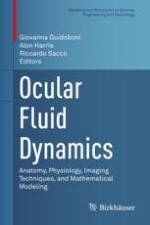The chapters in this contributed volume showcase current theoretical approaches in the modeling of ocular fluid dynamics in health and disease. By including chapters written by experts from a variety of fields, this volume will help foster a genuinely collaborative spirit between clinical and research scientists. It vividly illustrates the advantages of clinical and experimental methods, data-driven modeling, and physically-based modeling, while also detailing the limitations of each approach. Blood, aqueous humor, vitreous humor, tear film, and cerebrospinal fluid each have a section dedicated to their anatomy and physiology, pathological conditions, imaging techniques, and mathematical modeling. Because each fluid receives a thorough analysis from experts in their respective fields, this volume stands out among the existing ophthalmology literature.
Ocular Fluid Dynamics is ideal for current and future graduate students in applied mathematics and ophthalmology who wish to explore the field by investigating open questions, experimental technologies, and mathematical models. It will also be a valuable resource for researchers in mathematics, engineering, physics, computer science, chemistry, ophthalmology, and more.
